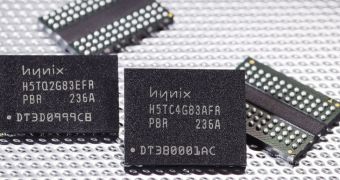The memory market may have, at one point, been showing further and further drops in prices, but this most joyous trend for customers has been curbed, as recent reports will show.
Since memory makers moved too fast from one manufacturing process to another, they ended up producing too much RAM, from a marketing standpoint.
Since this is no longer the case, prices are back on the rise, after years of almost continuous decline.
According to DigiTimes, or rather the Taiwan-based memory makers that it contacted, DRAM prices rose, in February, by an average 10%.
That means that, even though individual categories showed different progressions, the overall change was of 10%.
Right now, spot market pricing for PC-use DRAM is of US$1.50, or 1.15-1.5 Euro according to exchange rates, give or take.
Total capacity available for PC-use DRAM has decreased, as companies are making more mobile RAM nowadays, as well as server-use RAM.
Nevertheless, personal computers still account for the largest share, which means their higher tags reflected on the overall situation.
For those who want further details, the PC market share on the DRAM industry is of around 32%. Much smaller than the 44% of 2012, but still larger than that of the rest.
Mobile RAM is on second place, having gone from 22% to 30%, while servers are third, with 19% versus 2012' 18%.
That leaves consumer electronics memory (from 10% to 12%) and graphics DRAM, or VRAM as it is known (from 6% to 7%).
Currently, Samsung, the largest producer of memory chips, has only 20% of its production capacity allocated for PC-DRAM. A sharp contrast with SK Hynix, which still has almost 50%. Fears of short supply kept orders coming despite the prices though.
Speaking of which, 4GB DDR3 modules will reach $25 soon enough (19.22 Euro).

 14 DAY TRIAL //
14 DAY TRIAL //